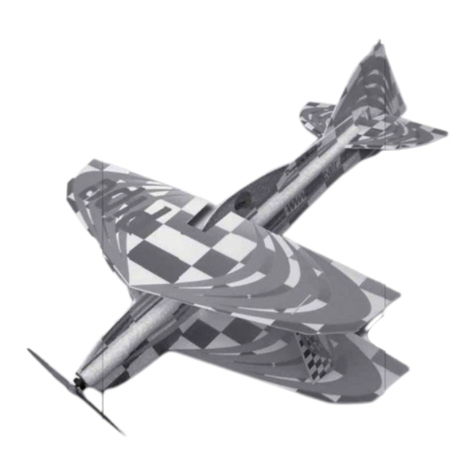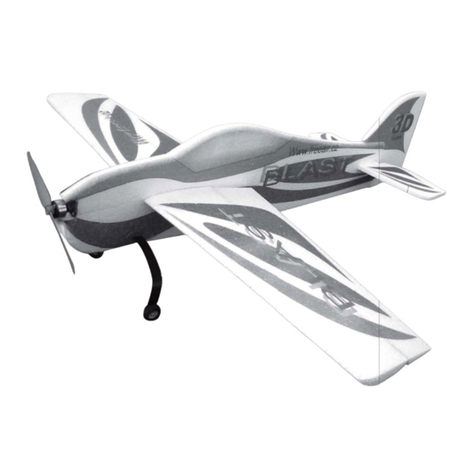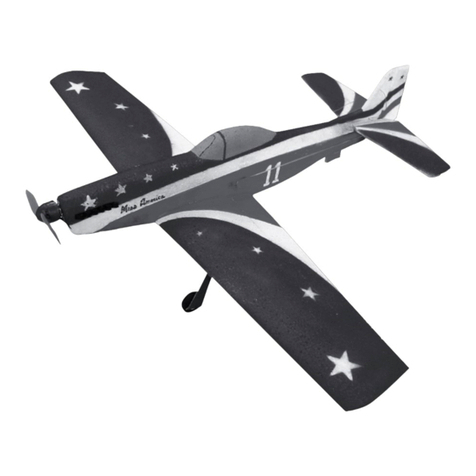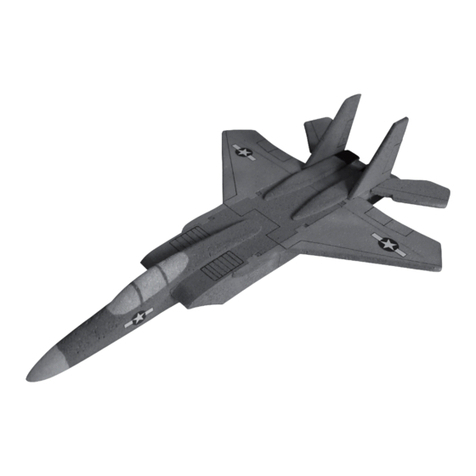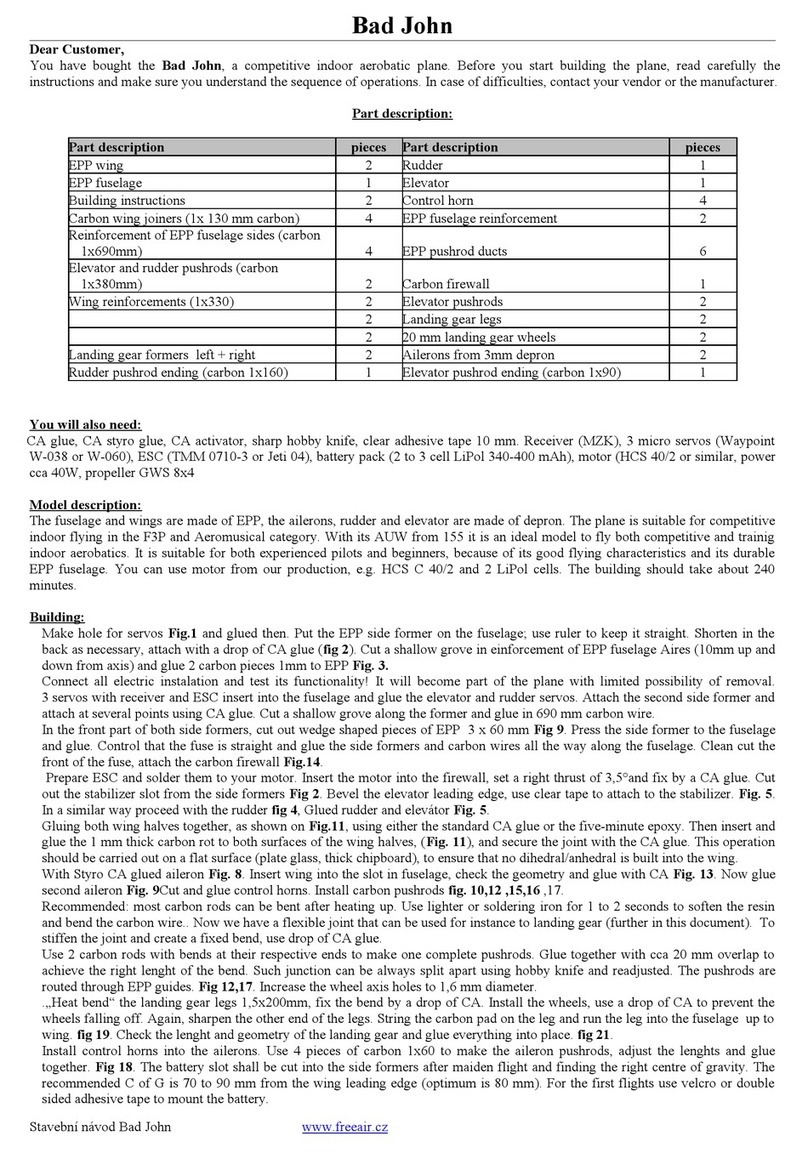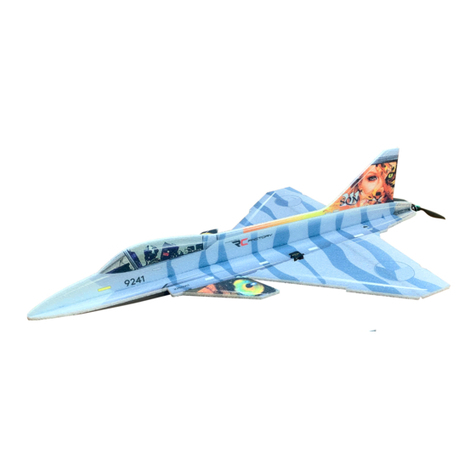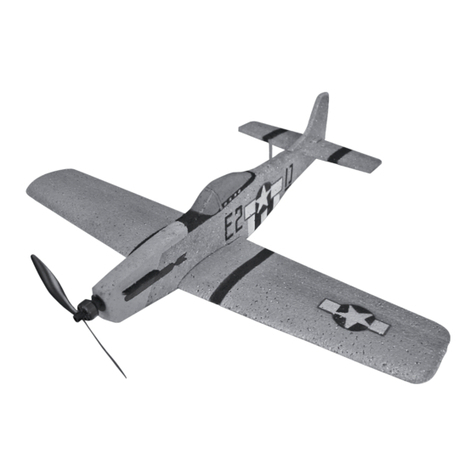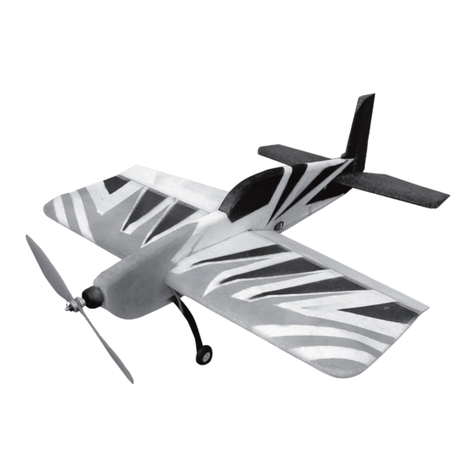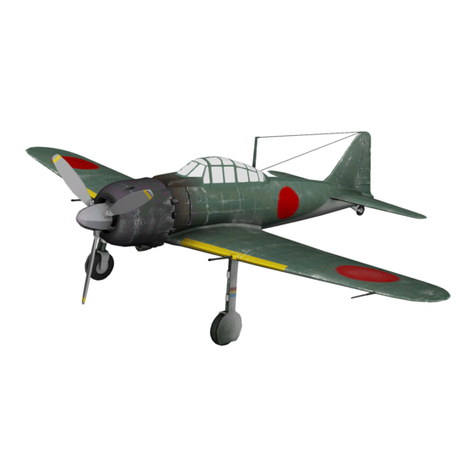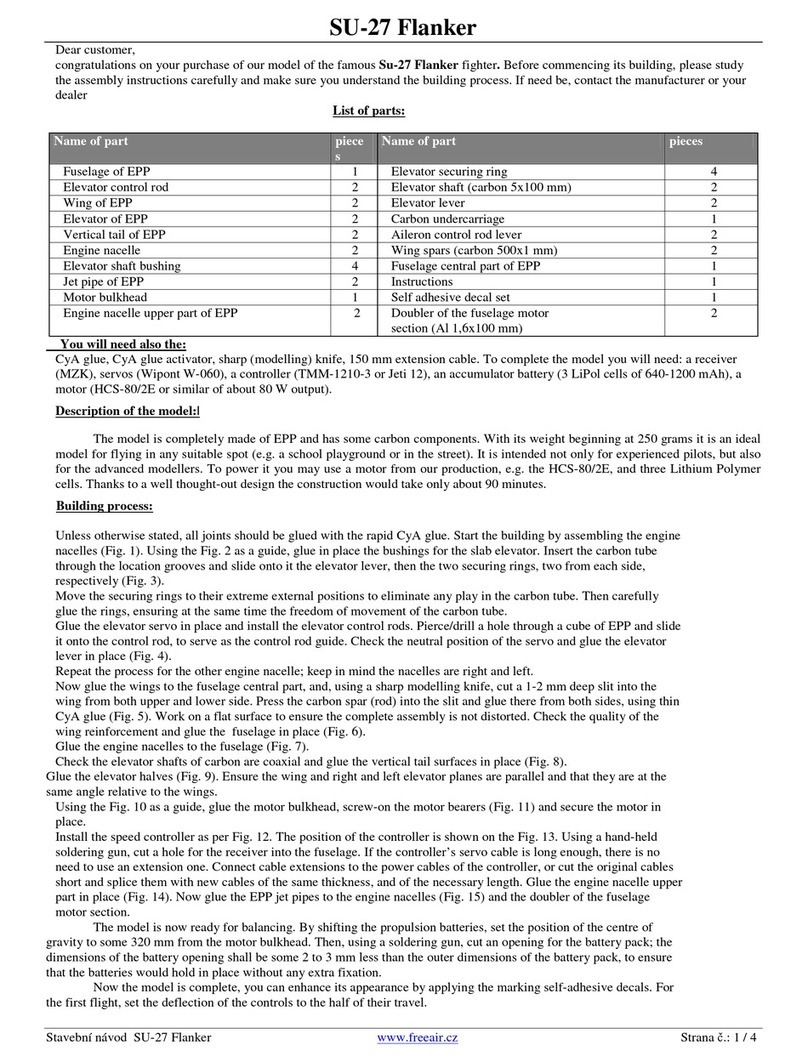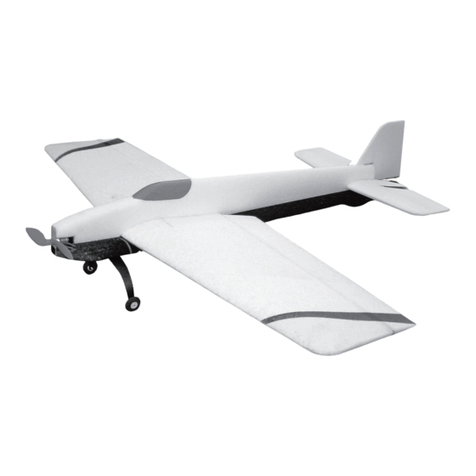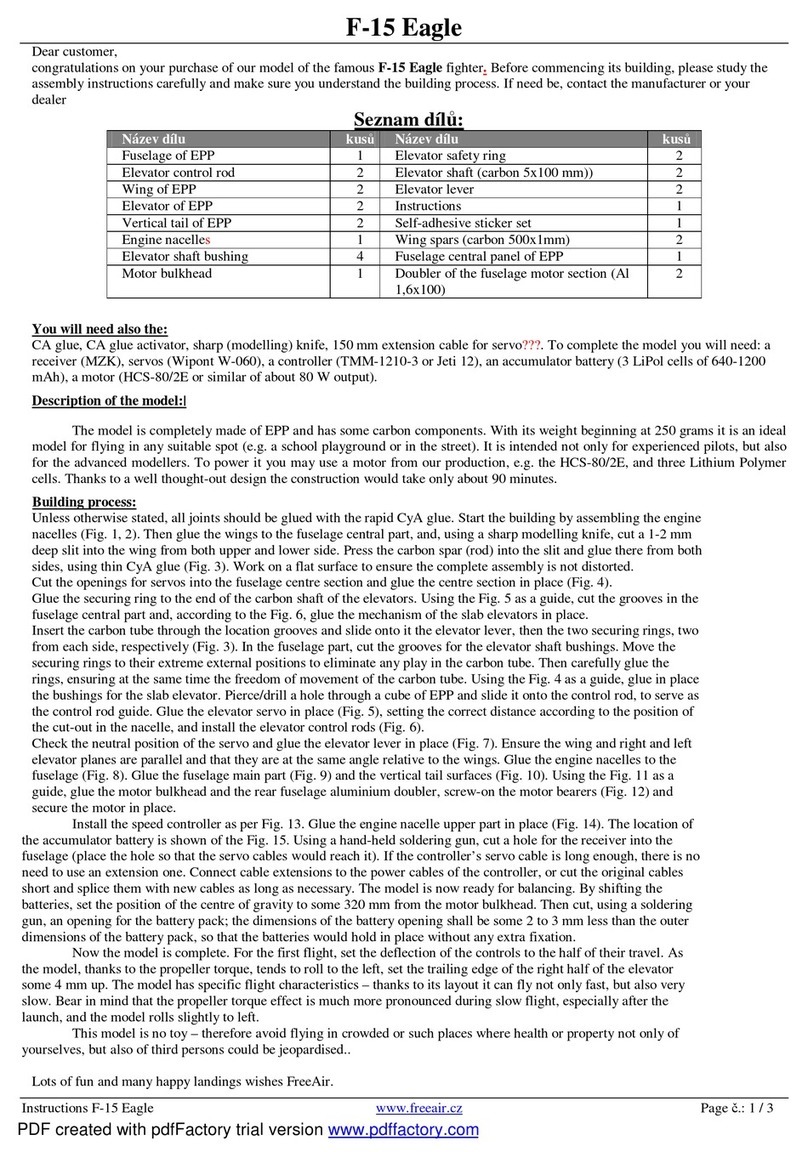BLADE 2 www.freeair.cz
BLADE
Dear customer, congratulations on the purchase of the Blade model. Before you begin, please
read carefully the building instructions and make sure that you understand the building
process.
DESCRIPTION OF THE MODEL:
The Blade model was designed from the outset to use the expanded polypropylene (EPP)
as its main building material, with some carbon composite components. Thanks to its low
weight, beginning at only 170 grams, it is an ideal model for the indoor flying, but also
perfectly suitable for flying outdoors in calm weather. It is intended not only for experienced
pilots, but also for the beginner‘s introduction to the aerobatic model flying. We suggest that
you use our Microtex 20/5/14 motor (fed from 2 cells of LiPol batteries of 720-1500 mAh
capacity) or the 20/8/18 (fed from three LiPol cells). Thanks to the well thought-out design,
the actual assembly of the kit parts that fit together as an easy jigsaw puzzle would take only
some 90 minutes of building time. All openings and compartments for the RC equipment are
ready made. The final colour finishing could be done using the simplest spray guns with colours
for textile, or you could order the model in a colour scheme. Your fantasy is not the limit - only
the model‘s weight watching is.
BUILDING:
Start with gluing both wing halves to the fuselage centre section, as shown on fig.1, using
either the standard CA glue or the five-minute epoxy. Then insert and glue the 1,6 mm thick
aluminium wire to both surfaces of the wing halves, (fig. 2,3), and secure the joint with the
CA glue. This operation should be carried out on a flat surface (plate glass, thick chipboard), to
ensure that no dihedral/anhedral is built into the wing.. Each aileron is a part of the wing half,
do not cut it away. Now using the carbon tube as a core drill, open up the hole in the elevator
(fig. 6) at a point 7 mm from its skewed edge (fig. 4). Slip the elevator control arm in place
(fig. 5, 6) and then glue the whole assembly with its bushings (fig. 7) into the fuselage . Put
the model on its back and glue on the bottom half (the vertical web, fig. 8) of the silhouette
fuselage. Cover the servos with the paper masking tape and glue them to the fuselage (fig. 9,
10).
If you use other types of servos than the recommended ones, enlarge the servo cutouts,
keeping them, however, slightly smaller than the overall dimensions of the servos, so that they
would push-fit into their respective cut-outs.
To the experienced 3D aerobatic pilots we recommend to use the special servo arm
to increase the throw of the aileron servo (fig. 11) and install (CA glue) the servo in the
fuselage.
Glue the undercarriage slot reinforcing doublers to the fuselage, as shown on fig. 12,
using preferably the five-minute epoxy. Check the alignment of the doublers with the slot in
the fuselage before the glue cures, to ensure that the wings are level when on ground. Later
on the undercarriage leaf spring shall be slid through this reinforced slot.
According to the fig. 13, glue the aileron control horns and install the push-pull rods (figs.
14, 15).
Make ready the pillars supporting the tail surfaces‘ push-pull rod guides and, using a
1,6mm bit, drill crosswise holes into them (fig. 16). Slip the pillars onto the push-pull rod and
connect the rod to the elevator horn. (fig. 17). Mark the position of the pillar and, using a
2,5mm bit, drill the opening of necessary depth. Glue the pillars into the opening (as per fig.
18).
Glue the top fuselage web (spine) in place (fig. 19). Open-up the slot for the rudder
hinges and glue in the rudder (fig. 20). Glue the rudder control horn in place and, in a way
similar to the way the elevator control push pull-rod was installed, install the rudder push-pull
rod (fig. 21).
Glue the motor bulkhead (fig. 22), ensuring the correct side- and downthrust (3° to 5°
to right and 0° down). Glue in the aluminium wire fuselage reinforcement (fig. 23).
Install the motor and screw on the motor bulkhead as shown in (fig. 24)
According to the (fig. 25), assemble the undercarriage. Starting on one side and using
a 2mm bit, drill a hole for the M2 2mm bolt that holds the undercarriage wheel on the leaf
spring. Secure the bolt from both sides of the leaf spring with a nut, then attach the wheel.
Make the streamlined wheel fairings (pants) choosing one of several ways. One option
is to glue together three layers of the EPP foam, using the PU or CA glue (see fig. 26), and,
once cured, open the slot for the undercarriage leaf spring in this block (fig. 27). Then sand
the laminated block to the final round shape and thread it on the undercarriage leaf spring
leg, burying the wheel in it in the process (fig. 28). You can use a simpler process, installing
the wheel to the leaf spring leg from the inner side and putting the single-layer (silhouette)
wheel pant on the outer side of the leaf spring (fig. 29).
Having this done on one side only, slide the leaf spring though the fuselage slot, not
gluing it at the time (fig. 30). Then install the second undercarriage wheel, and stand the
model on the undercarriage.
Check that the wing is parallel to the ground (the model stays square, fig. 32) and glue
the undercarriage to the fuselage.
Check the elevator servo is in neutral position and glue the elevator (fig. 31) in place.
According to (fig. 33), connect the controller to the radio receiver and solder its power cables
to the motor.
Attach the propeller to the shaft by a CA glue or a worm.
Check the position of the centre of gravity (CG) and, based on its established position,
place the battery as shown on the figs. 34 and 35.
Fine-balance the model using the power battery pack , attached either by a pieces of the
velcro strip, or by opening up a compartment in the fuselage spine, inserting the battery there.
Ensure that the opening is some 1 to 2 millimetres narrower than the battery pack to provide
for its tight fit. The required position of the centre of gravity is 85 millimetres from the wing
leading edge to the rear, as shown on the fig. 36.
This is the last step of building the model . Set the maximum throw of the control surfaces,
utilising the exponential functions of the RC set if wanted and available. Take into consideration
your own piloting skills.
Any paint could be used for colouring, bear in mind, however, that the lighter the model the
better its performance and behaviour. We recommend using the alcohol-based marker pens
and/or sprayed-on textile colours.
To further tune-up the model, you may buy the wing leading edge (it slows the model and
makes its reactions smoother) or a set of floats for water operation.
A lot of fun and many smooth landings with your model wishes FreeAir.
PART LIST
Part name Pcs Part name Pcs
Fuselage part of EPP 3 Push-pull rod horns 3
Elevator and rudder control rod 2 Aluminium wing spars (740 x 1,6 mm) 2
Wing of EPP 2 Elevator joiner of carbon (5x100 mm) 1
Elevator and rudder of EPP 3 Instructions 1
Undercarriage slot doubler 2Fuselage reinforcing aluminium wire
(1,6x100 mm) 2
Aileron push-pull rod 2Slab elevator set (bushings and control
lever) 1
Plastic hinge 2 Undercarriage wheel 2
Plastic tube (3x20 mm) 4 Set of bolts 2
Motor bulkhead 1 Set of nuts 4
Wheel pant of EPP 2 Undercarriage carbon leaf spring 1
You will need the following tools and materials
CA glue, five-minute epoxy, 1,6 mm, 2 mm and 2,5 mm dia drill bit, CA glue accelerator,
glass-weave reinforced self-adhesive band, sharp (modelling) knife, sandpaper, 3M contact
glue in a spray can. To complete the model you need the following: Receiver (Rex 5+), servos
(HS-55), controller (TMM 1210-3), battery pack (2-3 LiPol cells of 720-1500 mAh), motor
(Microtex 20/5/14 or 20/8/18).


